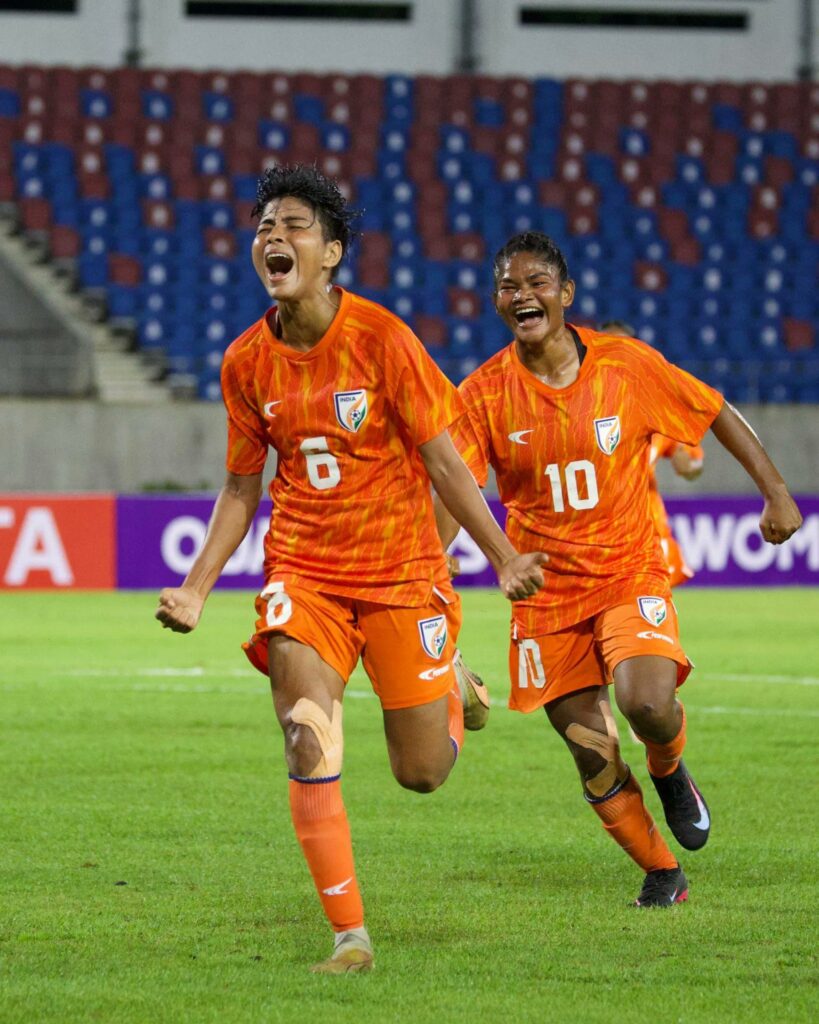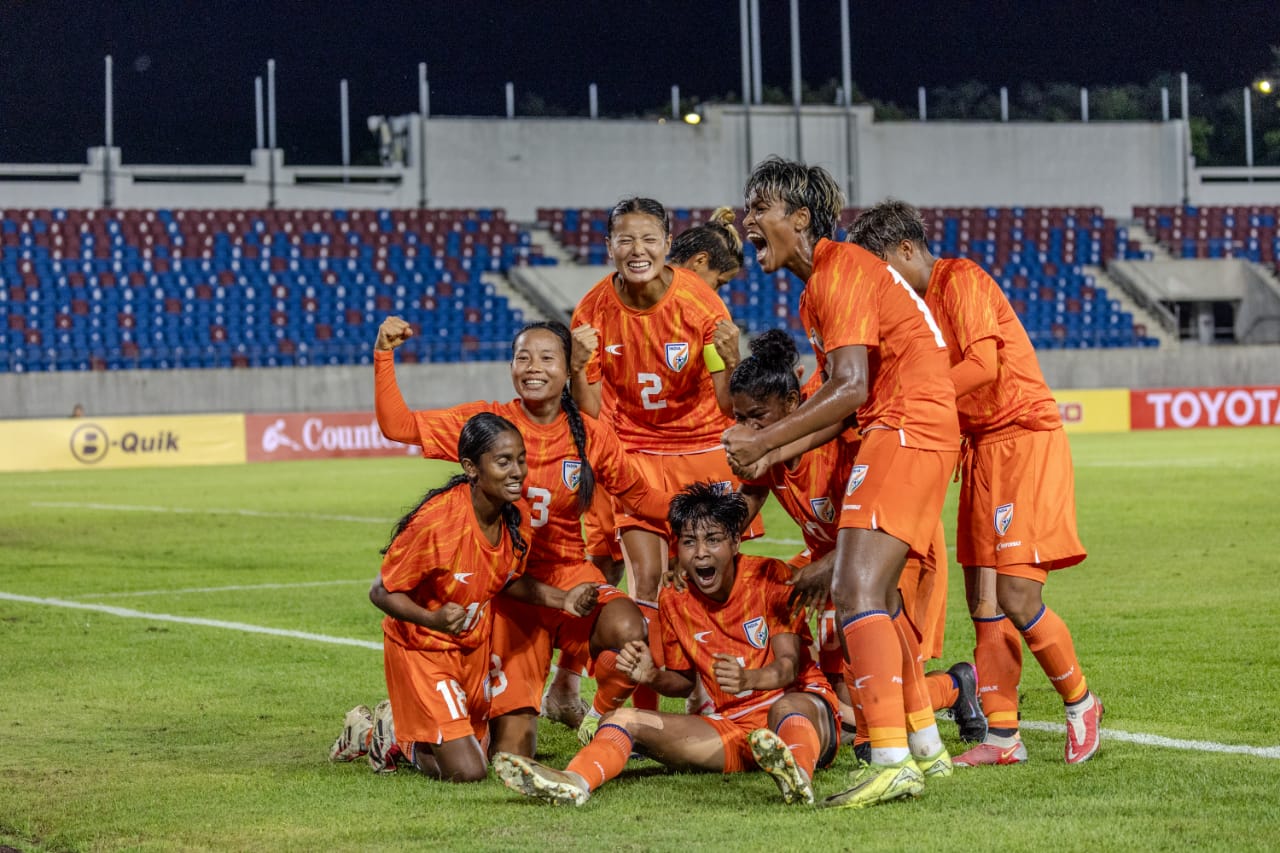For Indian football fans, tears of joy have become rare in recent times. The men’s national team continues to underwhelm, playing far below expectations and resembling a side ranked in the 170s. The future of ISL remains unclear, as discussions over the new contract between the AIFF and FSDL are nowhere near a positive conclusion. Even the women’s team had struggled to offer much hope.
But now, the Indian women’s national team has delivered a reason to celebrate. The Blue Tigresses have officially qualified for the AFC Women’s Asian Cup 2026, to be held in Australia, by topping their group in the qualification round held in Thailand. This is the first time India has secured a spot in the tournament through the qualification route, marking a historic moment for women’s football in the country. After a 23-year hiatus, the Indian flag will rise on the continental stage.

Historically, the women’s team has often fared better than their male counterparts, and many ardent followers believe that with proper support from the AIFF, they could one day qualify for the World Cup. The launch of the Indian Women’s League (IWL) in 2017 raised hopes of accelerated growth, but progress has been slow. The incompetency of the AIFF was evident int he organization of the IWL multiple times. Even with several players plying their trade in better overseas leagues, consistent performance has remained elusive. This qualification, however, offers a healing moment.
When the squad for the qualifiers was announced, fans were optimistic; however, with Thailand in the same group, qualification was anything but guaranteed. Head Coach Crispin Chhetri selected a squad that reflected domestic form: six players from IWL champions East Bengal, four from runners-up Gokulam Kerala, and three each from Sethu FC and Kickstart FC. The relegated side, Odisha FC, also contributed three players to the squad.
India’s campaign began with a commanding 13-0 victory over Mongolia, a nation that only began senior women’s football in 2018. Seven Indian players got on the scoresheet, including debutant Malavika. The Kasaragod native became the first Malayali to play for senior India in 26 years. Pyari Xaxa was the star, netting five goals, while Soumya, Sangita Basfore, and Priyadarshini each scored a brace.
Next up was Timor-Leste, a side that had previously suffered 20-0 and 17-0 drubbings to Australia and Vietnam. Despite dominating possession, India led by just one goal at halftime due to wasteful finishing. The second half saw three more goals, and India closed out a 4-0 win. Manisha scored twice. Though it was a clean sheet and a win, the performance left fans feeling India should have done more, given the gulf in quality. At the same time, Thailand was thrashing Iraq 7-0, making the goal difference race tighter.
India’s third group match was against Iraq, a side technically ranked lower than Mongolia and Timor-Leste, but who had looked sharper in this tournament. Iraq had defeated Mongolia and held Timor-Leste to a draw. Their squad featured players from the diaspora, including Nur Al Jawahiri (Sparta Rotterdam, Sweden), Nisthiman Bashir (German 4th Division), and Diyana Dawood (USA). But the Indian team rose to the occasion, winning 5-0, with five different players finding the net. For the third consecutive match, Panthoi Chanu kept a clean sheet.
Then came the decisive clash: India vs Thailand. Two unbeaten teams, both with identical goal differences (+22), and both yet to concede in the tournament. Thailand, ranked 46th in the FIFA rankings, had the home advantage and came out attacking in waves. India struggled to settle initially but grew into the game. In the 28th minute, Sangita Basfore unleashed a stunning volley from outside the box to give India the lead. Thailand responded in the second half through Chatchawan Rodthong. With the pressure mounting, Sangita once again stepped up, this time in the 72nd minute, to complete her brace and seal India’s qualification for the 2026 Asian Cup. The win over Thailand, who have qualified for the World Cups before, is arguably India’s most significant result in recent women’s football history.
What makes this qualification particularly special is that India earned it purely on sporting merit, not as hosts or through nomination, but by topping their group in a competitive qualification tournament.
Credit: This article has been written using information from a detailed Twitter thread by Roshan Kuruvila (@RoshanG_K), who closely followed and documented India’s AFC Women’s Asian Cup 2026 qualification campaign.

